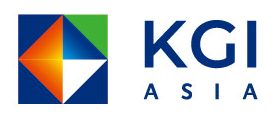Constituent Changes to the Hang Seng Index (HSI)
Hang Seng Indexes plans what will be one of the biggest revamps to Hong Kong’s 51-year-old stock benchmark, a move that will affect tens of billions of dollars in funds tracking it.
Based on the comparison of price-to-earnings ratio between the Hang Seng Index (HSI), S&P 500, and Dow Jones Industrial Average Indexe (DJIA), HSI has been underperforming. This is mainly attributable to the components being heavily weighted towards value sectors (old economy stocks) such as real estate, banking, and finance.
Advantages & Disadvantages
On the positive side, the HSI will better reflect China’s economic growth for global investors moving forward. Over the past decade, quality companies that were a proxy for China’s rapid development were listed in Hong Kong. Not only did these companies deliver phenomenal performance, but they also displayed strong competencies compared to the leading peers in other developed countries or regions.
With the changes of constituents, HSI will become a barometer of China’s capital market development and therefore, likely to attract more fund flows. However, on the flipside, the HSI could be more sensitive to both domestic and overseas macro events, and thus become more volatile. On the other hand, for those companies being included in HSI, the shareholders’ base will be more robust as a higher number of domestic and foreign institutional funds will hold stakes for the longer term. In a nutshell, this is a tailwind for all stakeholders, including listed companies, domestic and foreign investors, and the authorities.
Price-to-earnings comparison between HSI, S&P 500 and DJIA
Key Changes:
- Increasing the Number of Constituents to 100 – Hang Seng Indexes Company targets to increase the number of HSI constituents to 80 through the regular index reviews by mid-2022 and, ultimately, to fix the number at 100.
- Selecting the HSI Constituents by Seven Industry Groups – To achieve a more balanced representation of the Hong Kong stock market, the HSI constituents will be selected from seven Industry Groups. The target is to achieve a market capitalisation coverage of not less than 50% for each Industry Group. The combination of the Industry Groups will be reviewed at least every two years
- Relaxing the Listing History Requirement – The listing history requirement will be shortened to three months. This will provide flexibility for the timely addition of new listings.
- Maintaining the Representation of Hong Kong Companies – Hang Seng Indexes Company will maintain 20 to 25 constituents that are classified as Hong Kong Companies in the HSI. The number of Hong Kong constituent stocks in the index will be evaluated at least every two years.
- Adopting a Weighting Cap of 8% on All HSI Constituents – All HSI constituents, including weighted voting rights and/or secondary-listed constituents, will be subject to an aligned weighting cap of 8%. The same cap will be applied to the Hang Seng China Enterprises Index (‘HSCEI’).
Source: HSI

